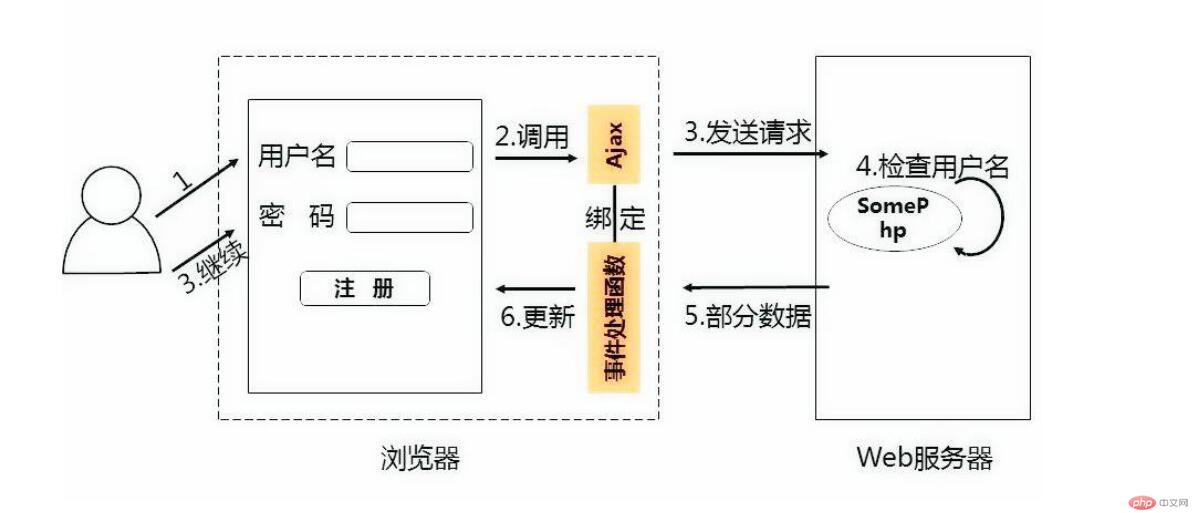
How AJAX works
AJAX=Asynchronous JavaScript and XML. Simply put, AJAX loads data through the background without reloading the entire web page. and display it on the web page.
The working principle diagram of Ajax:

You can find it through the schematic diagram of Ajax, enter the url in the browser When the address requests the server, an http request is sent to the server through Ajax. The response result of the service is also returned to Ajax first. It is processed by Ajax first and then returned to the browser for display on the page. If there is no Ajax, it is represented as an upper and lower connection line in the figure. The browser directly sends an http request to the server. After the server processes the request, the response result is directly returned to the browser for display.
The function of Ajax is to send http requests through js or jQuery. The http request includes url address, data, and data value transfer method, and there must be a return result after the server responds.
AJAX technical components:
JavaScript, CSS, DOM, XMLHttpRequest
Native writing method of AJAX:
The core of Ajax is the XMLHttpRequest object, which is the key to Ajax implementation. It is used to send asynchronous requests, receive responses and execute callbacks.
//第一步: var xhr=new XMLHttpRequest(); //第二步: xhr.open("post","test.php"); //第三步: xhr.setRequestHeader("Content-type","application/x-www-form-urlencoded"); //第四步: xhr.send("a=1&b=10"); //get请求报文体写法 //第五步: xhr.onreadystatechange=function(){ if(xhr.status=200 && xhr.readyState==4){ var result=xhr.responseText; //获取结果 alert(result); } }
AJAX syntax in jQuery:
jQuery provides multiple AJAX-related methods. Through the jQuery AJAX method, use Get or Post to request text from a remote server. , HTML, XML or JSON. This external data is then loaded directly into selected elements of the web page.
$.ajax({ url:"请求的url地址", type:"get|post", data:"数据" , dataType:"text|json|xml|script", success:function(re){ //服务器回传数据处理 } });
AJAX get() and post() methods
The get() and post() methods in jQuery are used to pass HTTP GET or POST request to request data from the server. GET is to request data from the specified resource, and POST is to submit the data to be processed from the specified resource.
Other ways of writing Ajax in jQuery are:
$.get(url,data,callback,dataType) $.post(url,data,callback,dataType)
| #Parameter name | Description |
| Requested url address | |
| Sent to the server Key-value type data | |
| Loading successful callback function | |
| The format of the content returned by the server, including xml, html, json |
The "domain" in cross-domain refers to two domain names. Cross-domain means that there is program A under domain name A, and program B under domain name B. Now program A needs to access B under domain name B through Ajax. program, this form of access is denied by the browser. AJAX cannot directly request a program under another domain name. The solution to this problem is: when making a request, the return data is returned in the form of jsonp, followed by a jsonpCallback. After the request is successful, fun1 will be called, so it is necessary to declare that there is a data parameter in fun1, and the data of this parameter is B The data returned by program B under the domain name can be seen cross-domain in fun1. Cross-domain is achieved in this way.
Benefits brought by AJAX:The above is the detailed content of One step to help you know what AJAX and AJAX cross-domain are. For more information, please follow other related articles on the PHP Chinese website!




